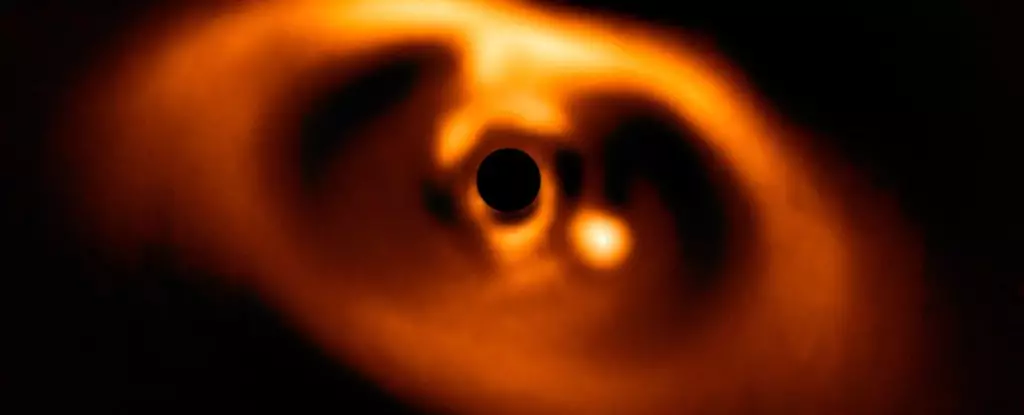In recent years, the field of astronomy has experienced a revolutionary transformation characterized by groundbreaking discoveries and paradigm shifts. This modern epoch, aptly dubbed “the age of shifting paradigms,” is largely fueled by state-of-the-art telescopes, advanced instruments, and the integration of machine learning techniques. These modern advancements have unveiled the depths of cosmic mysteries, enabling astronomers to challenge long-held beliefs about the formation of stellar systems.
Previously, the widely accepted Nebular Hypothesis, which posits that star systems originate from clouds of gas and dust collapsing gravitationally, was the cornerstone of our understanding of planetary formation. According to this theory, as stars form, the residual matter settles into a protoplanetary disk, where planets are subsequently born. If planetary formation followed this model, one would intuitively expect that the compositions of forming planets would closely align with the gases present in their surrounding disks. Yet, as recent studies highlight, this expectation might be an oversimplification of a far more complex reality.
A notable study led by a team of astronomers, including Chih-Chun “Dino” Hsu from Northwestern University’s Center for Interdisciplinary Exploration and Research in Astrophysics (CIERA), has provided evidence to challenge the traditional notions of planetary composition. Their research, spotlighted in The Astrophysical Journal Letters, focuses on the exoplanet PDS 70b, which orbits a youthful star that is approximately five million years old and is located about 366 light-years from Earth. This unique planetary system stands out for having protoplanets directly situated in the very disk from which they formed, offering an unparalleled opportunity to probe their composition and origins.
Utilizing the cutting-edge Keck Planet Imager and Characterizer (KPIC) instrument at the W.M. Keck Observatory, the research team was able to capture the spectra of PDS 70b’s atmosphere. Their innovative methodology allowed for precise measurements of the planet’s atmospheric composition despite the overwhelming brightness of its host star. Jason Wang, an assistant professor at Northwestern University and advisor to Hsu, has described the unprecedented nature of this observation as a significant step in understanding exoplanet formation.
One of the most pivotal findings from the analysis of PDS 70b is the notable disparity between the carbon-to-oxygen ratio in its atmosphere and that of its protoplanetary disk. Contrary to initial expectations that these ratios would be congruent, the team discovered that PDS 70b exhibits a markedly lower carbon-to-oxygen ratio than the gases present in its natal disk. This revelation suggests that there is more at play in the formation process than previously understood, and hints at a more intricate relationship between protoplanetary disks and the planets they spawn.
The authors of the study propose two potential explanations for this inconsistency. The first suggests that the planet’s formation may have occurred before its disk became enriched with carbon. The second hypothesis posits that the growth process of the planet involved significant absorption of solid materials, alongside gaseous accretion, thus shaping its atmospheric composition. It is essential to note that while this research focused on the gaseous components of the planet, it acknowledges that solid materials present in the primordial ice and dust may play a pivotal role.
These groundbreaking insights come with profound implications. The traditional perspective of planet formation—a straightforward gaseous accretion model—appears to be overly reductive. The apparent discrepancy between the expected and observed compositions in exoplanets like PDS 70b underscores the complexities inherent in the formation process, suggesting that a broader understanding of solid material contributions is necessary.
Additionally, this research opens the door to more detailed analyses of other co-existing planets in the PDS 70 system. By conducting further spectra measurements on PDS 70c, the other protoplanet within the same disk, researchers aim to elucidate the formation histories of both planets, thereby enhancing our comprehension of planetary development across diverse systems.
As the astronomical community continues to harness advanced technologies and methodologies, the revelations concerning exoplanets will likely reshape our understanding of the universe. What remains clear is that the cosmos is a complex tapestry of formation processes and materials, awaiting exploration and understanding. The implications of these findings extend not only to our knowledge of exoplanet formation but may also redefine the broader context of planetary systems across the universe, signaling a thrilling new frontier in astronomical investigation. The age of shifting paradigms is indeed upon us, urging scientists and enthusiasts alike to reevaluate what we think we know about the universe and our place within it.

